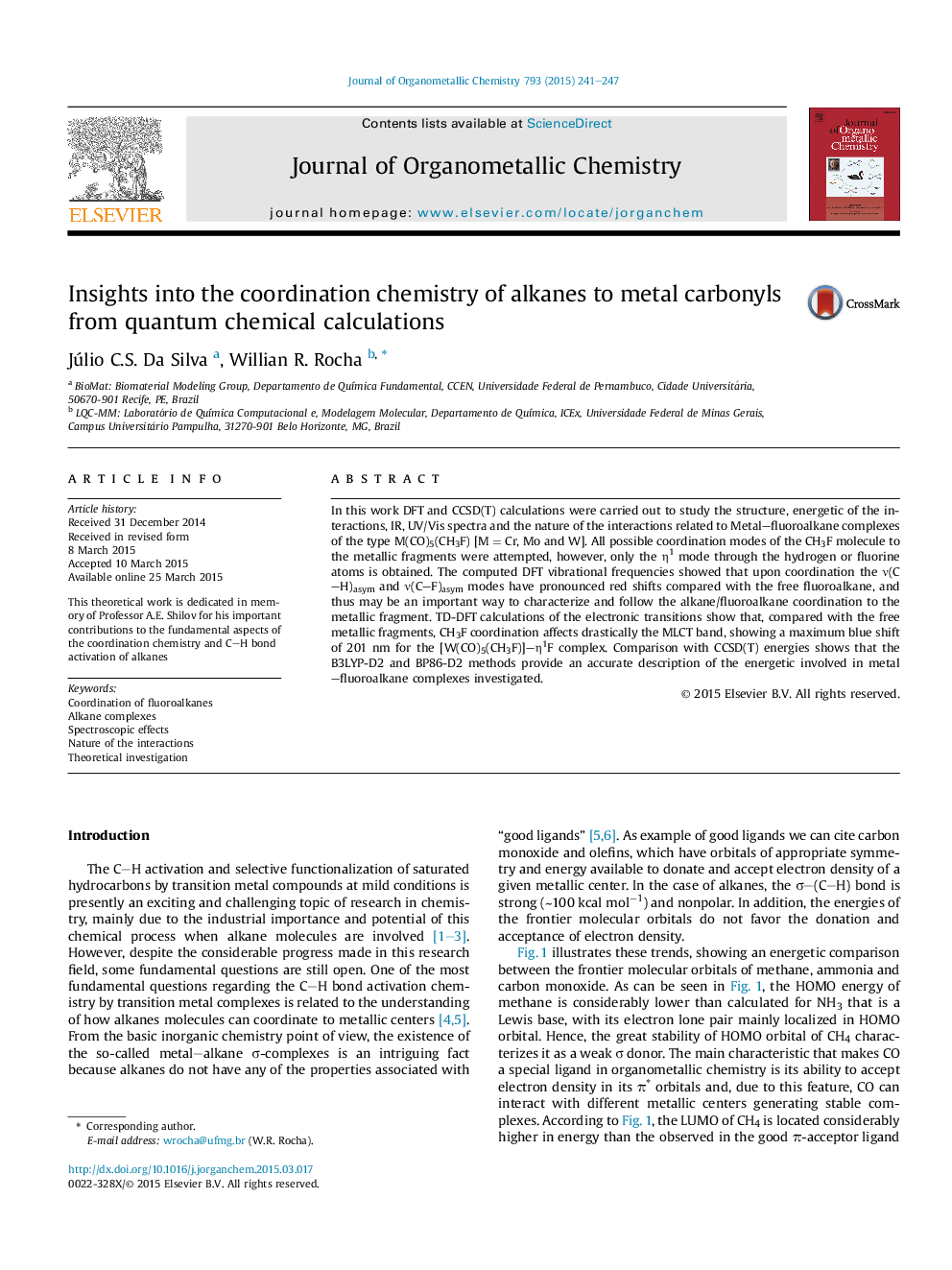| Article ID | Journal | Published Year | Pages | File Type |
|---|---|---|---|---|
| 1322011 | Journal of Organometallic Chemistry | 2015 | 7 Pages |
•DFT calculations predict the η1 coordination mode through fluoride or hydrogen.•Coordination of the fluoralkane affects drastically the electronic spectra.•C–H and C–F stretching modes are red-shifted upon coordination.•B3LYP and BP86 including dispersion effects provide good interaction energies.•Electrostatic and polarization effects differentiate the coordination modes.
In this work DFT and CCSD(T) calculations were carried out to study the structure, energetic of the interactions, IR, UV/Vis spectra and the nature of the interactions related to Metal–fluoroalkane complexes of the type M(CO)5(CH3F) [M = Cr, Mo and W]. All possible coordination modes of the CH3F molecule to the metallic fragments were attempted, however, only the η1 mode through the hydrogen or fluorine atoms is obtained. The computed DFT vibrational frequencies showed that upon coordination the ν(C–H)asym and ν(C–F)asym modes have pronounced red shifts compared with the free fluoroalkane, and thus may be an important way to characterize and follow the alkane/fluoroalkane coordination to the metallic fragment. TD-DFT calculations of the electronic transitions show that, compared with the free metallic fragments, CH3F coordination affects drastically the MLCT band, showing a maximum blue shift of 201 nm for the [W(CO)5(CH3F)]–η1F complex. Comparison with CCSD(T) energies shows that the B3LYP-D2 and BP86-D2 methods provide an accurate description of the energetic involved in metal–fluoroalkane complexes investigated.
Graphical abstractThe interaction of fluoroalkanes with metallic carbonyls is analyzed using Quantum Chemical calculations. Coordination of the fluoroalkane affects drastically the electronic spectra and C–H and C–F stretching modes are red-shifted upon coordination. Electrostatic and polarization effects differentiate the coordination modes.Figure optionsDownload full-size imageDownload as PowerPoint slide
